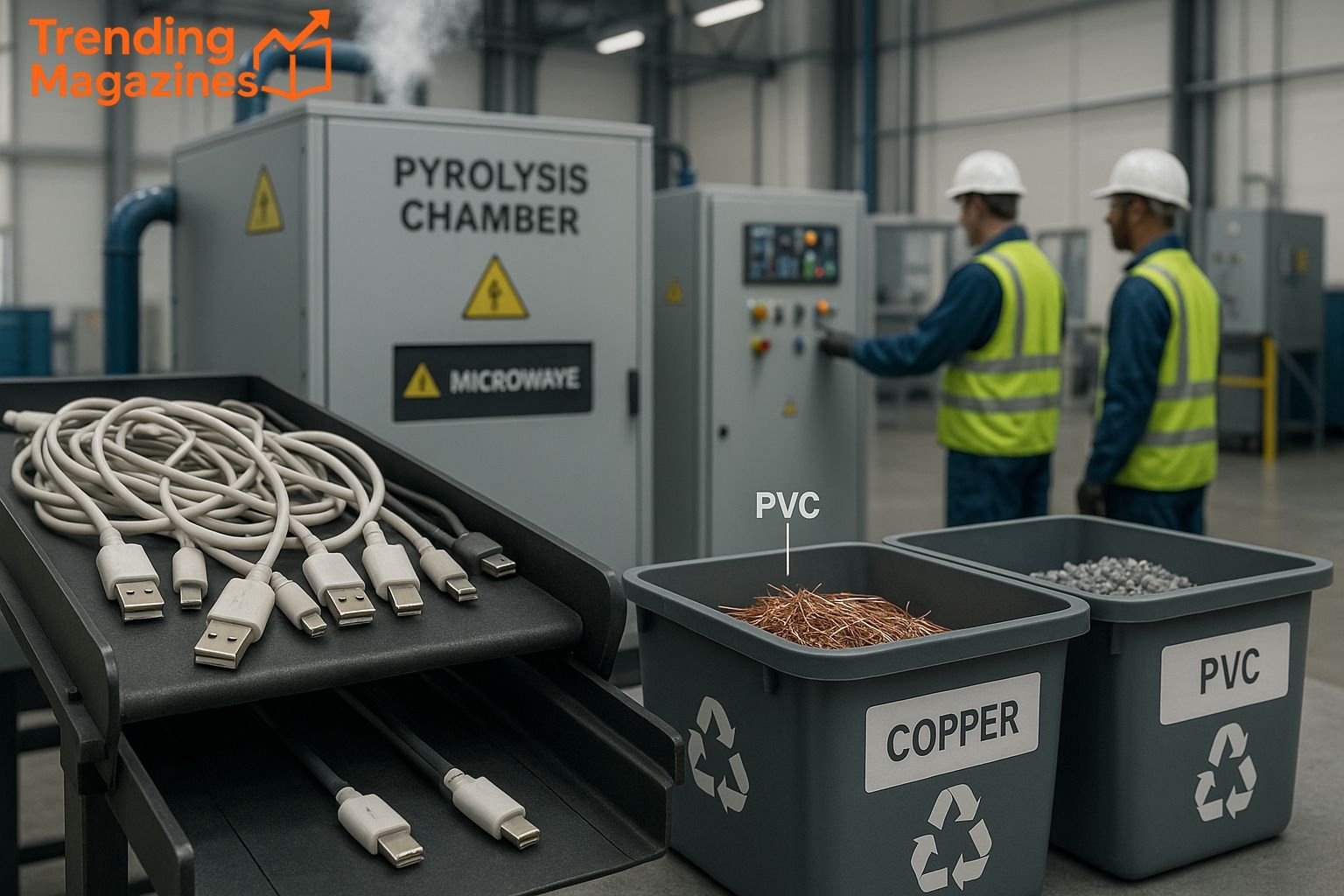Introduction:
Electronic devices are constantly evolving, and with every new smartphone or tablet, there’s usually a fresh set of USB cables and chargers. Most households have drawers or boxes filled with outdated cords. Unfortunately, when these items are no longer in use, many end up in landfills rather than being recycled. This article explains how to handle such electronic waste responsibly and why proper disposal is critical for environmental sustainability and resource recovery.
Key Facts About USB Cable and Charger Recycling
| Topic | Details |
| USB Cable Types | USB-C, Micro USB, USB Extension cables |
| E-Waste Concerns | Contains toxic materials, non-biodegradable components |
| Core Materials | Copper, aluminum, gold, PVC (Polyvinyl chloride) |
| Environmental Impact | Landfill overflow, plastic pollution, microplastics |
| Disposal Options | Curbside collection, drop-off centres, community recycling events |
| Regulation & Policy | EU universal USB-C regulation effective in 2024 |
| Circular Economy Role | Enables reuse and resource preservation |
Understanding the Importance of Responsible Disposal
USB cables and chargers are small, but their environmental impact is significant. These items are classified as electronic waste, or e-waste, which includes discarded electronic components that contain toxic materials. When improperly disposed of, they contribute to soil and water contamination and release microplastics due to their PVC insulation.
Proper e-waste management is not just about disposal it’s about preserving valuable materials, reducing plastic pollution, and participating in a circular economy where products are reused and raw materials are recovered for future use.
Types of USB Cables and Why They Matter
Each type of USB cable carries different implications for recycling:
USB-C
This cable type is now becoming standard across devices, thanks in part to new EU regulation that mandates a universal USB-C port for phones and small electronics by 2024. The aim is to reduce the number of redundant chargers and decrease tech waste disposal.
Micro USB
Though older, these cables are still widely found, particularly in older phones and accessories. As newer technologies replace them, Micro USB cables are increasingly part of outdated electronics stockpiles.
USB Extension Cables
These cables increase connection distances between devices and are often bulkier. Their structure may make them slightly more complex to recycle, but they contain recyclable electronic components.
Why Cables and Chargers Should Never Be Thrown Away
Throwing old cables in the trash leads directly to landfill impact. This creates long-term harm as PVC and other materials do not degrade naturally. Copper, a primary material in cables, is a valuable resource that should be recovered instead of being buried. Additionally, hazardous components inside chargers pose risks to sanitation workers and ecosystems.
Improper disposal also means missed opportunities for resource recovery, as these cables can be processed to reclaim metals in electronics like aluminum and traces of gold.
Safe and Responsible Ways to Recycle
Drop-Off Centres
Most communities have designated drop-off centres for electronics, which are equipped to handle small items like USB cords and old chargers. These centers separate and sort materials for efficient recycling.
Curbside Collection
In some municipalities, curbside collection programs include small electronics. This convenience encourages residents to recycle without requiring extra trips.
Recycling Events
Community recycling events often include electronic waste among the items they collect. These periodic programs help prevent improper disposal of tech waste and large-scale items.
Material Recovery Facilities (MRFs)
These industrial facilities specialize in separating and preparing recyclable materials. They use a mix of manual labor and automation to isolate metals, plastics, and wires.
Buy-Back Centres
Some recycling incentives include financial compensation for returning recyclable electronics. While USB cables may not bring in cash, they are accepted and responsibly processed.
How to Prepare Cables and Chargers for Recycling
To make the recycling process more effective:
- Sort cables by type (USB-C, Micro USB, extension cables).
- Bundle cords to prevent tangling and simplify sorting.
- Avoid mixing electronic items with general waste.
- Donate functioning chargers to local organizations or reuse centres.
- Contact local authorities for collection schedules and recycling event details.
These simple steps improve the efficiency of municipal recycling programs and reduce the chance that recyclables will be discarded improperly.
The Role of Regulation in Reducing Charger Waste
The EU’s universal USB-C regulation is a landmark effort in reducing the variety of chargers in the market. It’s expected to cut back on charger turnover and reduce cable waste generated by consumers upgrading their devices.
Alongside this, more countries are adopting waste legislation that holds manufacturers responsible for the end-of-life stage of their products. These laws aim to prevent the unchecked export of global e-waste to developing regions lacking proper e-waste infrastructure.
Why Recycling Supports Environmental Sustainability
Recycling USB cables and chargers directly supports environmental sustainability by:
- Reducing the need for copper extraction and new raw material mining.
- Conserving energy by reprocessing existing materials.
- Decreasing the release of hazardous materials into the environment.
- Supporting the transition to a sustainable tech disposal system.
Every recycled charger or cable helps to shrink the smartphone upgrade cycle’s environmental footprint and supports broader goals of sustainable electronics management.
Final Thoughts
As technology advances, it becomes even more important to consider the environmental costs of our devices. USB cables, though small, play a large role in the growing volume of e-waste. Choosing to recycle them responsibly supports resource recovery, prevents pollution, and promotes a circular economy.
Rather than adding to landfills, individuals can act by participating in local recycling events, dropping off cables at recycling facilities, or donating working items to extend their life cycle. By treating every cable and charger as part of a valuable materials stream, we take a step toward more responsible electronic waste recycling.
When the time comes to upgrade your device, take a moment to consider what happens to your old cables. Small actions, repeated widely, make a difference.




